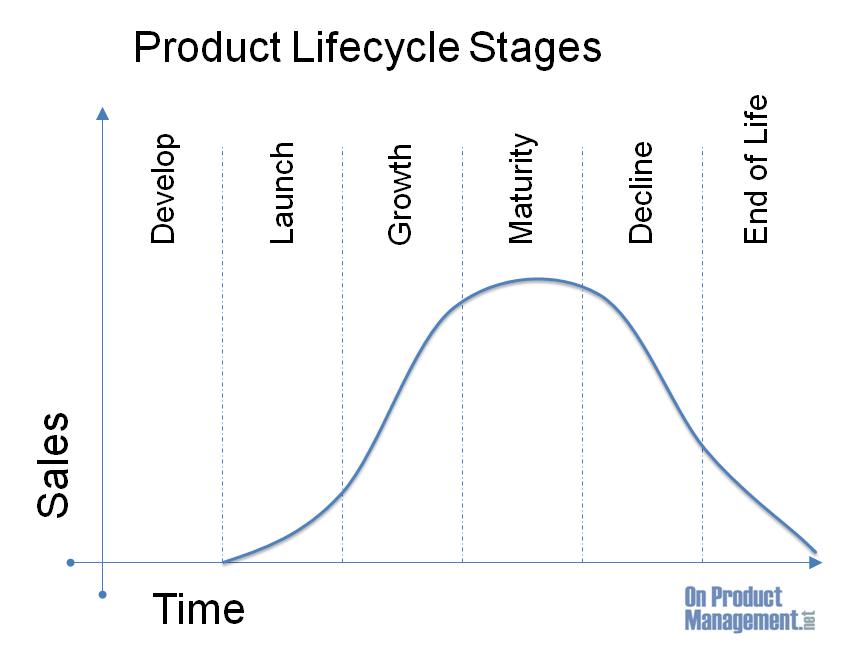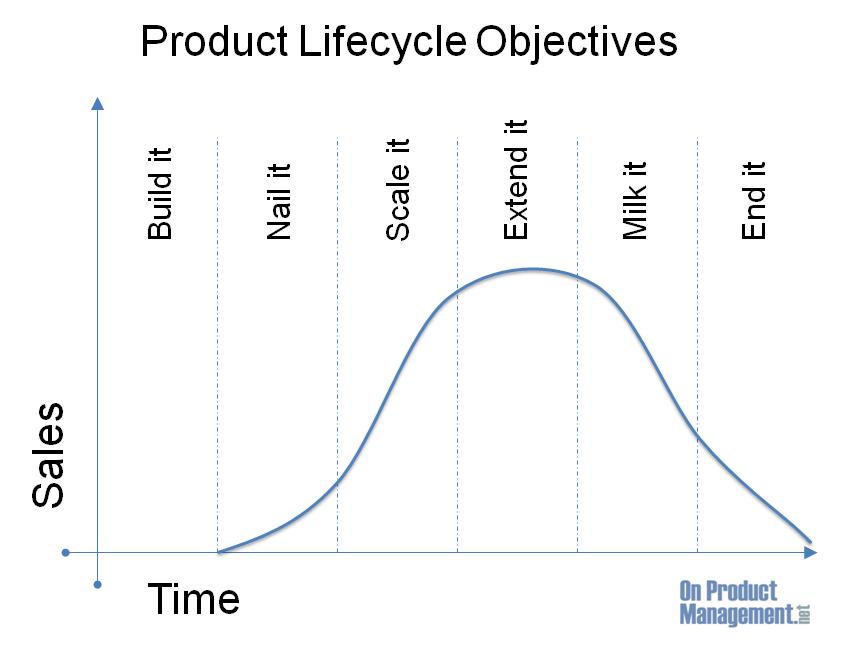So here it is, looong overdue, the continuation of this series of articles. I published Part 1 and Part 2 late last year. I also had part 2a back in May, related to an audio seminar I participated in with Tom Grant of Forrester Research.
I’m not sure why it’s taken me so long to get to part 3, but here it is.
The story thus far
Unlike departments such as Sales or Marketing, measuring the value and contribution of a Product Management team or department is difficult.
Product Management doesn’t directly build, market or sell product, but clearly contributes significantly to the success in all those areas.
The focus of Product Management is product success, but that changes depending on the product strategy and the stage in the lifecycle of a given product.
Given the broad scope of the work, the dynamics of different products, and the cross-functional nature of the role, how can Product Management measure it’s success.
A different view of the Product Lifecycle
A traditional Product Lifecycle diagram (for a successful product!) 🙂 looks something like this:
This is clearly a simplified diagram for illustrative purposes.
For any actual product, the stages such as Develop, Launch etc. would have different lengths of time, with the Maturity, and Decline stages being much longer than they are shown. The curve itself would also vary somewhat in shape and wouldn’t be a simple bell curve.
Each of these stages is fairly self explanatory, but if we look at the same diagram and replace the stage names with the main objective of each stage, the diagram becomes:
Described this way, it becomes much easier to identify the key Product Management goals and focus for each stage.
Build it
The focus is on developing the first version of a product or solution that addresses a market need for an identifiable set of target customers. This is typically an iterative process, starting with an initial hypothesis or seed of an idea and then working with a small set of early (pioneer) customers, learning from them as they are exposed to the product and incorporating that input back into the offering.
Nail it
Once the product is launched, Product Management focuses on gaining an even deeper understanding of use cases, product limitations, positioning and messaging issues, sales barriers, pricing issues and other blocking factors that would prevent rapid adoption of the product in the target market. Education is a factor here, both within the company as well as externally. Thus working with press, analysts, key partners and other influencers is very important.
Scale it
Once Product Management has “nailed it”, (maybe with version 1.2 of the product along with changes to the marketing, pricing etc. of the product), focus shifts to helping other parts of the company scale efforts and results. This can be tied into working with marketing, education, finance, sales channels etc. Additionally, changing market conditions, customer and partner feedback, and competitive issues will be used to drive the product development cycle.
Extend it
In my opinion, this is a very interesting phase of the product lifecycle, because there are many ways to extend a product beyond the original problem space and target market segment. But it takes a lot of discipline to properly decide how to proceed and many companies fail miserably at this stage. Some methods of extension include:
- technology– e.g. adding new platform support such as a port from Windows to Mac or Linux
- geography — e.g. international expansion or foreign language support
- market segments — e.g. a small business edition or other vertical market specific offering
- adjacent problems — e.g. like adding more blades to a Swiss Army knife
- channels – e.g. working with resellers, VARs, distributors, OEMs or other parties
Milk it
At a certain point, either due to market or technology changes, the return on investment in extending the product is not justifyable. And assuming the market for the product has not commoditized — i.e. with free or very cheap equivalent alternatives — a product can enter a “cash cow” phase where the company can “milk” it, by collecting revenues but with minimal investments.
At this point Product Management’s focus is on maximizing the (declining) revenue stream, minimizing expenditures, and defending against low cost alternatives or other threats. Traditionally software products in this stage have benefited from a large customer base, strong recurring maintenance revenue and low demand for product changes or investment.
End it
At some point, based on declining revenue, increased maintenance costs, related technology obsolecence or complete lack of demand, a decision is made to end-of-life (EOL) a product. For any established product, this can take a period many quarters or years depending on the product and market segment.
There is not a lot for Product Management to do in this phase except perform the business analysis for EOLing a product and have it approved by management. Once that is done, assuming an EOL process is defined, a number of tactical activities, usually undertaken by other teams, are performed to ensure a smooth transition for customers.
What’s next?
In the next part — and I promise it is NOT months away — I’ll dig further into each of these stages and focus on specific activities and metrics for Product Management.
Saeed

